Mazda T3000, T3500, T4000 Repair Manual
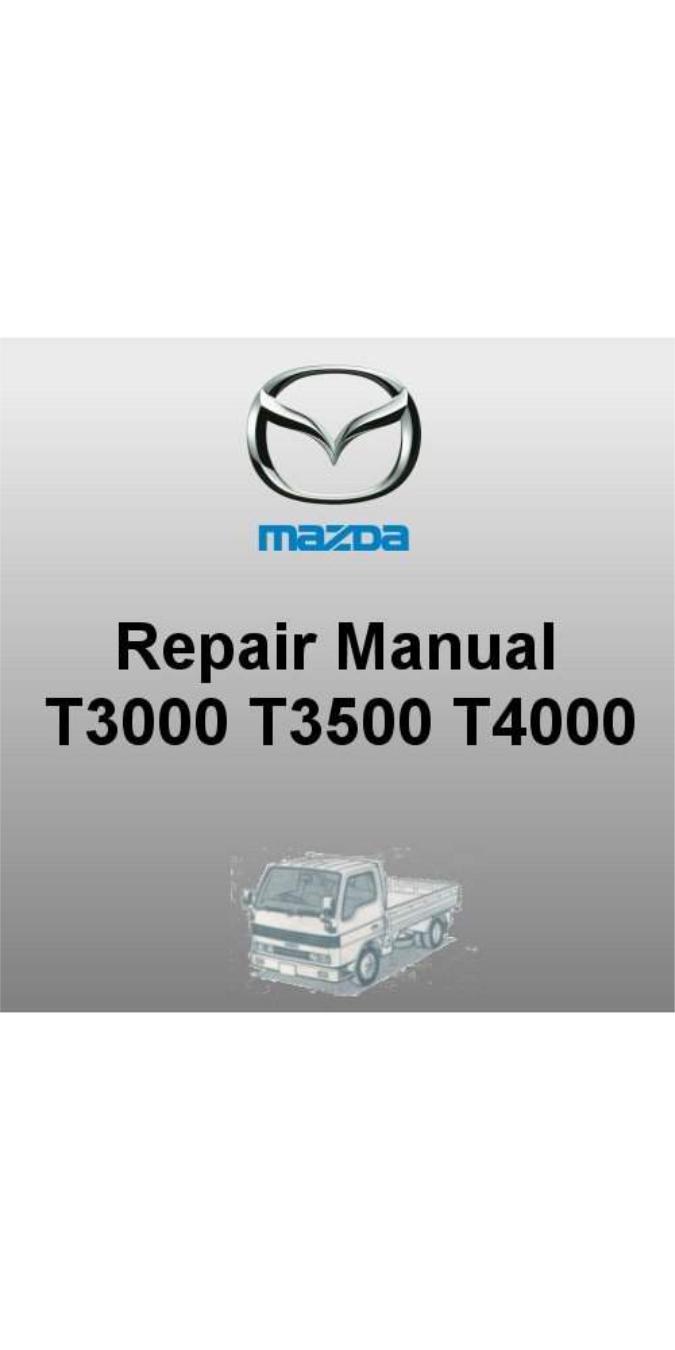
GI
GENERAL INFORMATION
IMPORTANT INFORMATION ..................... |
GI- 2 |
|
BASIC ASSUMPTIONS ............................ |
GI- 2 |
|
SAFETY RiSK ••.•.•••••••.•••••••••••••••.••••••••••• |
GI- 2 |
|
POSSIBLE LOSS OF WARRANTY •••••.••••••• |
GI- 2 |
|
WARNING ON LUBRICANTS |
GI- 2 |
|
AND GREASES .••••••••••••••••••••••••••••••••••• |
||
HOW TO USE THIS MANUAL .................... |
GI- 3 |
|
PREPARATION ...................................... |
|
GI- 3 |
REPAIR PROCEDURE•.••••••••••••.••••••.••••••. |
GI- 3 |
|
SyMBOLS••••••••••••••••••••••••••••••••••••••••••••• |
GI- 4 |
|
NOTES, CAUTIONS, AND WARNINGS••••••• |
GI- 4 |
|
FUNDAMENTAL PROCEDURES .~............... |
GI- 4 |
|
PROTECTION OF THE VEHICLE ••••••.••••••• |
GI- 4 |
|
A WORD ABOUT SAFETY ....................... |
GI- 5 |
|
PREPARATION OF TOOLS |
GI- 5 |
|
AND MEASURING EQUIPMENT ••••••••••••. |
||
SPECIAL TOOLS •••••••••••••••••••••••••••••••••••• |
GI- 5 |
|
REMOVAL OF PARTS ••••••••••••••••••••••••••••• |
GI- 5 |
|
DISASSEMBLY •••••••••••••••••••••••••••••••••••••• |
GI- 5 |
|
REASSEMBLy ••••••... |
•••••••••.•••.•••••••••••••••• |
GI- 6 |
ADJUSTMENTS .............. |
~•••••••••••••••••••••• |
GI- 7 |
RUBBER PARTS AND TUBING •••••••••••••••• |
GI- 7 |
|
JACK AND SAFETY STAND (RIGID RACK) |
GI- 8 |
|
POSiTIONS•••••••••••••••••••••••••••••••••••••••••••• |
||
TOWiNG..................... |
............................. |
GI- 9 |
IDENTIFICATION NUMBER LOCATIONS ...... |
GI- 9 |
|
UNITS ..................................................... |
|
GI-10 |
ABBREViATIONS ..................... |
................ |
GI-10 |
CAUTION ................................................ |
|
GI-11 |
ELECTRICAL TROUBLESHOOTING TOOLS GI-11 |
||
CAUTION WITH ELECTRICAL PARTS•••••••• |
GI~12 |
|
INSTALLATION OF A MOBILE TWO-WAY |
GI-14 |
|
RADIO SYSTEM ................................... |
|
|
9TGGIX-OO'

GI
IMPORTANT INFORMATION
IMPORTANT INFORMATION
BASIC ASSUMPTIONS
This repair manual assumes that you have certain special tools that are necessary for the safe and efficient performance of service operations on Ford vehicles and that you know how to use them properly. It also assumes that you are familiar with automobile systems and basic service and repair procedures. You should not attempt to use this manual unless these assumptions are correct and you understand the consequences described below.
SAFETY RISK
This manual contains certain notes, warnings, and other precautionary information that you should carefully read and follow to reduce the risk of personal injury to yourself or others and the risk of improper service that may damage the vehicle or render it unsafe. If there is no such information in regard to any specific service method, this does not mean there is no possibility that personal safety or vehicle safety will be jeopardized by the use of incorrect methods or tools.
POSSIBLE LOSS OF WARRANTY
The manufacturer'swarranty on Ford vehicles and engines can be voided if improper service or repairs are performed by persons other than those at an Authorized Ford Dealer.
WARNING ON LUBRICANTS AND GREASES
Avoid all prolonged and repeated contact with mineral oils, especially used oils. Used oils contaminated during service (e.g.• engine sump oils) are more irritating and more likely to cause serious effects. including skin cancer. in the event of gross and prolonged skin contact.
Wash skin thoroughly after work involving oil.
Protective hand cleaners may be of value provided they can be removed from the skin with water. Do not use gasoline. paraffin, or other solvents to remove oil from the skin.
Lubricants and greases may be slightly irritating to the eyes.
Repeated or prolonged skin contact should be avoided by wearing protective clothing if nE?cessary. Particular care should be taken with used oils and greases containing lead. Do not allow work clothing to be contaminated with oil. Dry clean or launder such clothing at regular intervals.
9TFGIX·001
GI-2

HOW TO USE THIS MANUAL
GI
HOW TO USE THIS MANUAL
PREPARATION
PREPARATION points out the needed SST for the service operation that follows. It is best to gather all necessary SST before beginning work.
Example:
N TIE-ROD END BOOT AND STEERING GEAR BOOT |
SST NUMBER |
||
TIE·ROD END BOOT AND STEERING GEAR BOOT |
|
||
PREPARATION |
|
|
|
|
|
|
|
49 0118 850C |
49 H028 301 |
|
|
Puller. ball joint |
Installer. boot |
|
|
SST NAME SST ILLUSTRATION
9MUGIX-033
REPAIR PROCEDURE
1.Most repair operations begin with an overview illustration. It identifies the components. shows how the parts fit together. and visual parts inspections. If a damaged or worn part is found, repair or replace it as necessary.
2.Expendable parts, tightening torques, and symbols'for oil, grease, and sealant are shown in the overview
illustration. |
. |
3.Pages related to service procedures are shown under the illustration. Refer to this information when servicing the related part.
Example:
SHOWS
APPLICATION
|
|
|
|
|
|
|
|
|
|
|
|
n-'07 (7.4-10.'. Sot-1IJ |
|
|
|
|
|
|
|
|
\ |
|
|
|
|
|
|
|
|
\ |
|
|
|
|
|
|
|
|
\\p"1 |
|
|
|
|
|
|
|
|
~.Ji;);' |
|
|
|
|
|
|
|
|
|
|
|
|
|
|
|
|
|
. / |
|
|
|
|
|
SHOWS |
|
|
|
|
|
SHOWS TIGHTENING |
||
EXPENDABLE |
|
|
|
|
|
|||
|
|
|
|
|
TORQUE |
|||
PARTS |
|
|
|
|
|
|||
|
|
|
|
|
SPECIFICATION *2 |
|||
|
|
|
|
|
|
|
||
ETC. |
L_~~~~~~~~__.,..--________~~~dlSHOWSTIGHTENING |
|||||||
|
|
|
|
|
|
|
TORQUE UNIT |
|
|
|
1.Bott |
1S. Bearing inner race |
|
|
|
|
|
|
|
2. Lock plate |
~R~~~0~W~I....~~~~~~~~M~-~2~2~ |
HOWS VISUAL |
||||
|
|
3. Beanng cup |
||||||
|
|
4. Adjusting screw |
I: |
tot· |
or |
«ICBIOn |
|
|
SHOWS |
|
InstallatIOn... . |
|
............. page 1.1-24 |
INSPECTION |
|||
5. Beanng outer race |
~~: ~nion |
|
|
INFORMATION |
||||
RELATED |
S.Locknut |
|
|
|||||
PAGE FOR |
7. Washer |
|
R~wl... |
|
............ page M-21 |
|
|
|
SERVICE |
a.Com |
Inspect splines and teeth for wear or damage |
|
|
||||
|
|
|
|
AdjUSlment of heIght. |
page M-22 |
|
|
|
|
|
|
|
Ad |
|
oe M- |
|
|
POINT OF OIL,..".._-¥~:......J
9MUGIX·034
*1: The numbering (ex.G)) shows service procedure.
*2: Units shown in N-m (m-kg, ft-Ib) unless otherwise specified.
GI-3
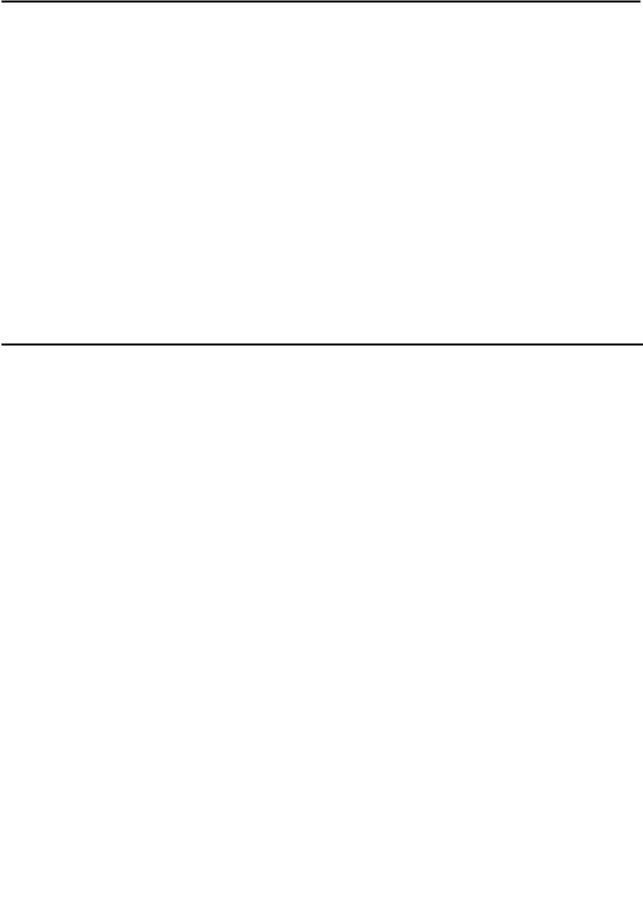
GI HOW TO USE THIS MANUAUFUNDAMENTAL PROCEDURES
SYMBOLS
There are six symbols indicating oil, grease, and sealant. These symbols show the points of applying such materials during service.
Symbol |
Meaning |
Kind |
|
|
|
|
|
y |
Apply oil |
New engine oil or gear oil as appropriate |
|
|
|
|
|
|
|
|
|
II |
" |
|
|
Apply brake fluid |
Only brake fluid |
||
.. |
|||
- |
Apply automatic transmission fluid |
Only ATF |
|
1 |
Apply grease |
Appropriate grease |
|
... |
Apply sealant |
Appropriate sealant |
|
|
|
|
|
• |
|
|
|
|
|
||
Apply petroleum jelly |
Appropriate petroleum jelly |
||
|
|||
|
|
|
|
|
|
|
|
|
|
|
05UGIX-OOS
Note
• When special oil or grease is needed, this is shown in the illustration.
NOTES, CAUTIONS, AND WARNINGS
As you read through the procedures, you will come across NOTES, CAUTIONS, and WARNINGS. Each one is there for a specific purpose. NOTES give you added information that will help you to complete a particular procedure. CAUTIONS are given to prevent you from making an error that could damage the vehicle. WARNINGS remind you to be especially careful in those areas where carelessness can cause personal injury. The following list contains some general WARNINGS you should follow when you work on a vehicle . '
9MUGIX.Q36
FUNDAMENTAL PROCEDURES
PROTECTION OF THE VEHICLE
Always be sure to cover fenders, seats. and floor areas be- fore starting work.
GI-4

FUNDAMENTAL PROCEDURES
GI
9MUGIX·OO3
9MUGIX-038
'pp,_1.'"
47UOGX·005
47UOGX·OO6
9MUGIX·039
A WORD ABOUT SAFETY
The fol/owing precautions must be followed when jacking up the vehicle.
1.Block the wheels.
2.Use only the specified jacking positions.
3.Support the vehicle with safety stands.
Start the engine only after making certain the engine compartment is clear of tools and people.
PREPARATION OF TOOLS AND MEASURING EQUIPMENT
Be sure that al\ necessary tools and measuring equipment are available before starting any work.
SPECIAL TOOLS
Use special tools when they are required.
REMOVAL OF PARTS
While correcting a problem. try also to determine its cause. Begin work only after first learning which parts and subassemblies must be removed and disassembled for replacement or repair.
DISASSEMBLY
If the disassembly procedure is complex. requiring many parts to be disassembled. all parts should be disassembled in a way that will not affect their performance or external appearance and identified so that reassembly can be performed easily and efficiently.
GI-5
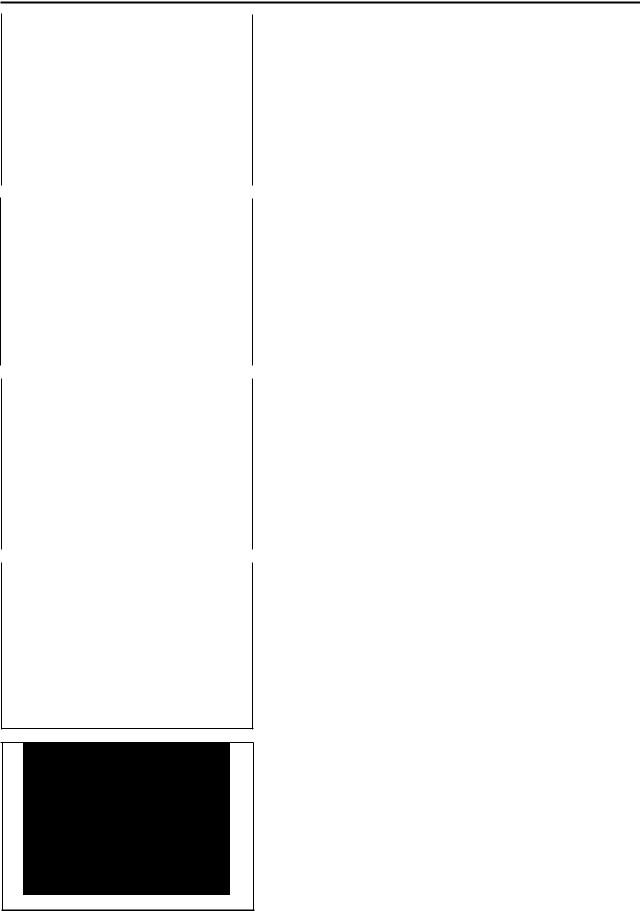
GI
FUNDAMENTAL PROCEDURES
1.Inspection of parts
When removed, each part should be carefully inspected for malfunctioning, deformation, damage, and other problems.
SMUGIX-040
2.Arrangement of parts
All disassembled parts should be carefully arranged for reassembly.
Be sure to separate or otherwise identify the parts to be replaced from those that will be reused.
3.Cleaning parts for reuse
All parts to be reused should be carefully and thorotJghly cleaned in the appropriate method.
47UOGX-010
REASSEMBLY
Standard values, such as torques and certain adjustments, must be strictly observed in the reassembly of all parts. Refer to STANDARD BOLT AND NUT TIGHTENING TORQUE in Section TD for tightening torques not mentioned in the main text.
If removed, these parts should be replaced with new ones:
1. Oil seals |
2. |
Gaskets |
3. a-rings |
4. |
Lock washers |
5. Cotter pins |
6. |
Nylon nuts |
SMUGIX-004
Depending on location:
1. Sealant should be applied to gaskets.
2_ Oil should be applied to the moving components of parts.
3.Specified oil or grease should be applied at the prescribed. locations (such as oil seals) before reassembly.
SMUGIX-042
GI-6
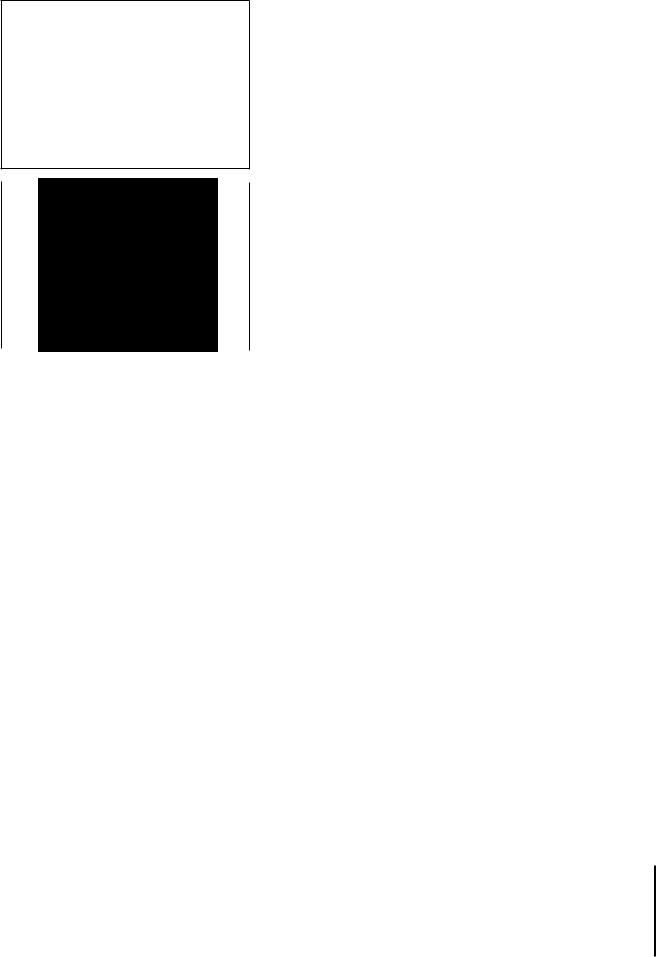
FUNDAMENTAL PROCEDURES |
GI |
ADJUSTMENTS
Use suitable gauges and/or testers when making adjustments.
67UOGX·002
RUBBER PARTS AND TUBING
Prevent gasoline or oil from getting on rubber parts or tubing.
9MUGIX-OOS
GI-7
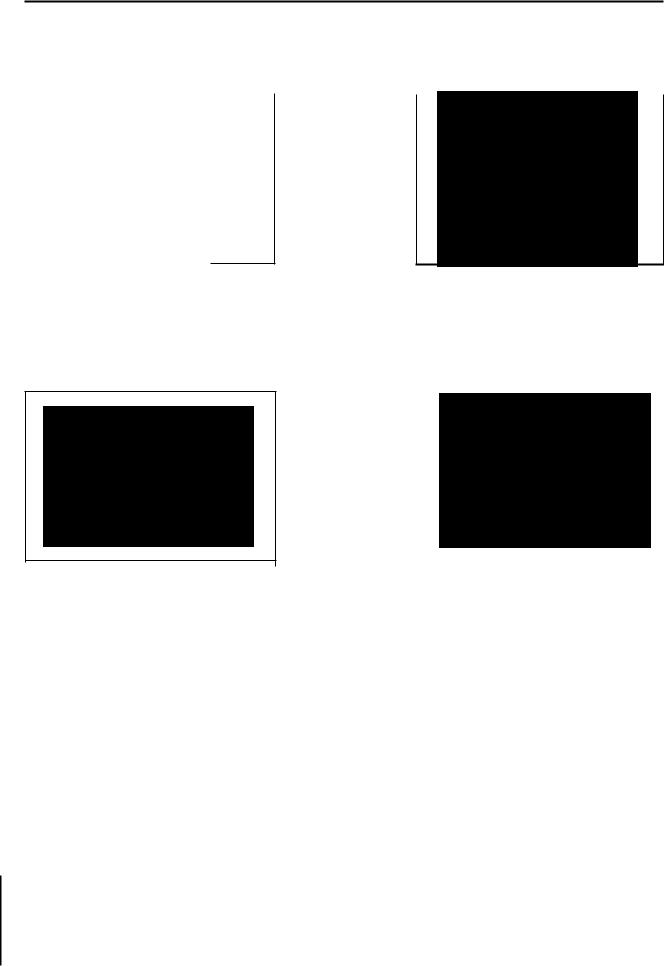
GI
JACK AND SAFETY STAND (RIGID RACK) POSITIONS
JACK AND SAFETY STAND (RIGID RACK) POSITIONS
FRONT END |
|
Jack position: |
Safety stand positions: |
At the center of the front axle |
On both sides of the front axle |
9TFGIX.()()2 |
9TGGIX.Q03 |
REAR END |
Safety stand positions |
Jack position |
Spring clamps at both sides of the |
At the center of differential |
differential |
|
|
|
|
9TGGIX.()()6 |
9TGG1X-007 |
GI-8
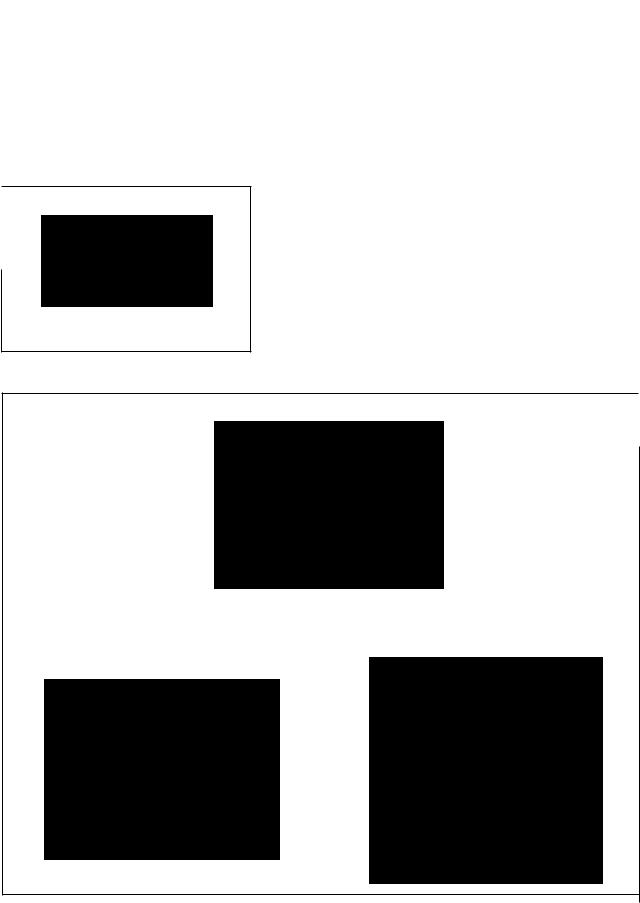
TOWING, IDENTIFICATION NUMBER LOCATIONS |
GI |
TOWING
Proper towing equipment is necessary to prevent damage to the vehicle.
Laws and regulations applicable to vehicles in tow must always be observed.
If the transmission, rear axle and steering system are not damaged, the vehicle may be towed on all four wheels. If they are damaged, use a towing dolly.
9TGGIX·008
Caution
•The gearshift lever must be set a NEUTRAL, the engine key in the "ACC" position and the parking brake released. Remember that power brake assist will not be available when the engine is inoperative.
REAR
9TGGIX·OO9
IDENTIFICATION NUMBER LOCATIONS
VEHICLE IDENTIFICATION NUMBER (YIN)
ENGINE MODEL AND NUMBER
ENGINE NUMBER
9TGGIX-Ql0
GI-9

GI
UNITS, ABBREVIATIONS
UNITS
Nm (m-kg or cm-kg, |
|
ft-Ib or in-Ib) .................. |
Torque |
rpm ............................... |
Revolutions per minute |
A................................... |
Ampere(s) |
V................................... |
Volt(s) |
D................................... |
Ohm(s) (resistance) |
kPa (kg/cm2 , psi).......... |
Pressure |
|
(usually positive) |
mmHg (inHg) ............... |
Pressure |
|
(usually negative) |
W.................................. |
Watt |
liters (US qt, Imp qt) .... |
Volume |
mm (in) ......................... |
Length |
",F ................................. |
Electric capacity |
°c ................................ |
Centigrade |
of ................................. |
Fahrenheit |
T ................................... |
Ton |
Ft .................................. |
Feet |
|
|
|
9TGGIX·011 |
ABBREVIATIONS
ABDC ........................... |
After bottom dead |
|
center |
ACC ............................. |
Accessories |
ASS'Y........................... |
Assembly |
ATDC ........................... |
After top dead center |
ATF .............................. |
Automatic transmission |
|
fluid |
BBDC ........................... |
Before bottom dead |
|
center |
BTDC ........................... |
Before top dead center |
CAB .............................. |
Cabin. |
ECU ............................. |
Engine control unit |
ELR .............................. |
Emergency locking |
|
retractor |
EX ................................ |
Exhaust |
FIG............................... |
Figure |
IGIIGN .......................... |
Ignition |
IN ................................. |
Intake |
INT ............................... |
Intermittent |
LH ................................ |
Left hand |
M ................................... |
Motor |
MAX ............................. |
Maximum |
MIN .............................. |
Minimum |
OFF .............................. |
Switch off |
OHV ............................. |
Overhead valve |
ON................................ |
Switch on |
PCV .............................. |
Positive crankcase |
PIS |
ventilation |
Power steering |
|
PTC .............................. |
Positive temperature |
|
coefficient |
QSS .............................. |
Quick start system |
RH ................................ |
Right hand |
Sec............................... |
Second(s) |
SST.. ............................. Special service tool |
|
ST................................. |
Start |
SW................................ |
Switch |
TDC .............................. |
Top dead center |
9TFGIX·OO3
GI-10

CAUTION |
GI |
1.4W or 3.4W
9TGGIX·013
9MUGIX-020
VOLTMETER
..
GROUND
9MUGIX·021
9MUGIX-045
CAUTION
ELECTRICAL TROUBLESHOOTING TOOLS Test Light
The test light, as shown in the figure, uses a 12V bulb. The two lead wires should be connected to probes.
The test light is used for simple voltage checks and for checking for short circuits.
Caution
•When checking the control unit, never use a bulb over 3.4W.
Jumper Wire
The jumper wire is used for testing by shorting across switch terminals and ground connections.
Caution
•Do not connect a jumper wire from the power source line to a body ground; this may cause burning or other damage to harnesses or electronic components.
Voltmeter
The DC voltmeter is used to measure of circuit voltage. A voltmeter with a range of 15V or more is used by connecting the positive ( + ) probe (red lead wire) to the point where voltage is to be measured and the negative (-) probe (black lead wire) to a body ground.
Diagnosis Connector |
. |
Insert the probe into the service hole when connecting a jumper wire to the diagnosis connector.
Caution
•Do not insert the jumper wire probe into the diagnosis connector terminal, which may damage the terminal.
Ohmmeter
The ohmmeter is used to measure the resistance between two points in a circuit and also to check for continuity and diagnosis of short circuits.
Caution
•Do not attempt to connect the ohmmeter to any circuit to which voltage is applied; this may bum or otherwise damage the ohmmeter.
GI-11
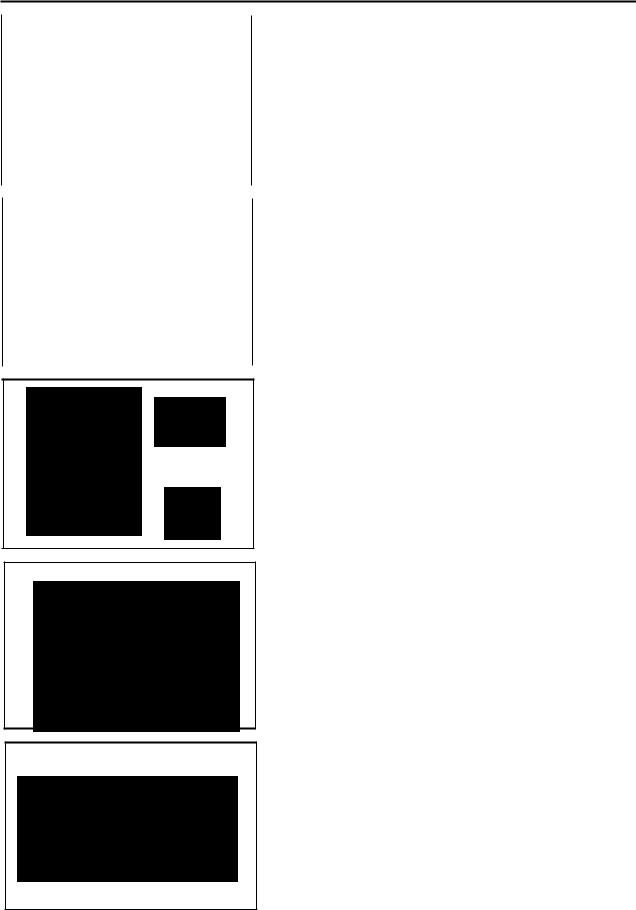
GI
CAUTION
9MUGIX·022
9MUGIX·023
9MUGIX·024
9MUGlX-025
03UGIX-oll
CAUTION WITH ELECTRICAL PARTS Battery Cable
Before disconnecting connectors or replacing electrical parts, disconnect the negative battery cable.
Connectors
Removal of connector
Never pull on the wiring harness when disconnecting connectors.
Connectors can be removed by pressing or pulling the lock le~er as shown.
._-
Locking of connector
When locking connectors, make sure to listen for a click that will indicate they are securely ·Iocked.
Inspection
1.When a tester is used to check for continuity or to measure voltage, insert the tester probe from the wire harness side.
GI-12

CAUTION |
GI |
2.Check the terminals of waterproof connectors from the connector side, as they cannot be accessed from the wire harness side.
Caution
•Use fine wire to prevent damage to the terminal.
•Do not damage the terminal when inserting the tester lead.
Terminals
Inspection
Pull lightly on individual wires to check that they are secured
in the terminal.
9MUGIX-027
9MUGIX-028
Replacement of terminals
Use the appropriate tools to remove the terminal as shown. When installing the terminal, be sure to insert it until it locks securely.
<Female>
Insert a thin piece of metal from the terminal side of the connector, and then, with the terminal locking tab pressed down, pull the terminal out from the connector.
<Male>
Same as the female type.
Sensors, SWitches, and Relays
Handle sensors, switches, and relays carefully. Do not drop them or strike them against other parts.
9MUGIX·030
GI-13
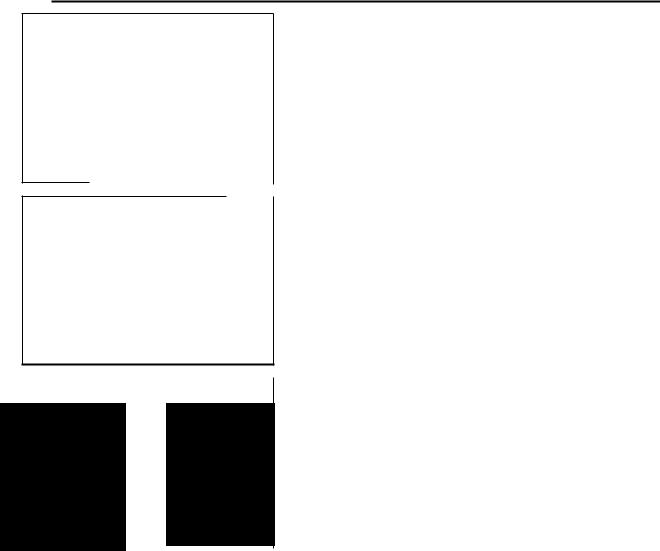
GI
CAUTION
~I".... . FUSE _ . l . : .. L__
Fuse Replacement
1. When replacing a fuse, be sure to replace it with one of specified capacity.
If a fuse again fails after it has been replaced, the circuit probably has a short circuit and the wiring should be checked.
2.Be sure the negative battery terminal is disconnected before replacing a main fuse (80A).
3.When replacing a pullout fuse, use the fuse puller supplied in the fuse box cover.
|
|
9MU(3IX-032 |
|
|
|
|
Wiring Harness |
BIR |
8RIY |
|
|
|
Wiring color codes |
||
|
|
|
Two-color wires are indicated by a two-color code symbol. |
|
|
|
The first letter indicates the base color of the wire and the sec- |
|
|
|
ond the color of the stripe. |
|
|
CODE |
COLOR |
|
.CODE |
COLOR |
|
|
|
|
|
|
|
|
|
B |
Black |
|
0 |
Orange |
|
|
|
|
|
|
|
|
|
BR |
Brown |
|
P |
Pink |
|
|
|
|
|
|
|
|
|
G |
Green |
|
R |
Red |
9MUGIX.Q29 |
||||||
|
|
|
|
|
|
|
|
|
GY |
Gray |
|
V |
Violet |
|
|
|
|
|
|
|
|
|
L |
Blue |
|
W |
White |
|
|
|
|
|
|
|
|
|
LB |
LiQht Blue |
|
Y |
Yellow |
|
|
LG |
Light Green |
|
- |
- |
|
|
|||||
|
|
INSTALLATION OF MOBILE TWO-WAY RADIO SYSTEM
If a mobile two-way radio system is installed improperly or if a high-powered type is used, the control unit may be affected.
When the vehicle is to be equipped with a mobile two-way radio, observe the following precautions:
1.Install the antenna at the farthest point from control units.
2.Install the antenna feeder as far as possible from the control unit harnesses (at least 30 cm [11.8 in)).
3.Ensure that the antenna and feeder are properly adjusted. .
4.Do not install a high-powered mobile two-way radio system.
9TGGIX.Q14
GI-14
A
PRE-DELIVERY INSPECTION
AND
SCHEDULED MAINTENANCE
PRE-DELIVERY INSPECTION TABLE ••••••• A- |
2 |
SCHEDULED MAINTENANCE SERVICES•• A- |
3 |
9TGOAX-101
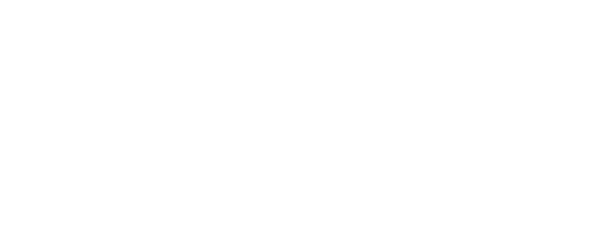
A
PRE-DELIVERY INSPECTION TABLE
PRE-DELIVERY INSPECTION TABLE
I1. EXTERIOR I
*INSPECT and ADJUST, if necessary, the following items to the specifications:
o Glass, exterior bright metal and paint for damage or rust o Wheel lug nuts
o Tire pressures
o All weatherstrips for -damage or detachment o Operation of tilt cab lock lever
o Door operation and alignment *INSTALL the following parts: o Outside rearview mirror(s)
INTERIOR (cont'd)
*CHECK the following items: C Presence of spare fuse
o Upholstery and interior finish
*CHECK and ADJUST, if necessary, the following items: o Operation and fit of windows
o Pedal height and free play of brake and clutch pedals o Parking brake
4.UNDER HOOD-ENGINE RUNNING AT OPERATING TEMPERATURE
12. UNDER HOOD-ENGINE OFF I
",INSPECT and ADJUST, if necessary, tne fOllOWing Items to the specifications: -
o Fuel, coolant and hydraulic lines, fittings, connections and components for leaks
o Battery electrolyte level and specific gravity o Engine oil level _
o Oil level in steering gearbox (Manual steering) o Power. steering fluid level (if equipped)
o Brake and clutch master cylinder fluid levels o Windshield washer reservoir fluid level
o Glow plugs (if equipped)
o Radiator coolant and specific gravity
o Tightness of water hose clamps (including heater hoses) o Tightness of battery terminals
o Drive belt tensions
o Accelerator cable and linkage for free movement
* CHECK the following items:
o Operation of cold start device (if equipped) o Idle speed
o Injection timing
I5. ON HOIST I
* CHECK the following items: o Rear axle oil level
o Underside fuel, coolant and hydrauliC lines, fittings, connections and components for leaks
o Tires for cuts or bruises
o Steering linkage, suspension, exhaust system ar.ld all underside hardware for looseness or damage
o Tighteness of cargo deck installation bolts
I6. ROAD TEST I
I3. INTERIOR I
*INSTALL the following parts: o Fuse for accessories
*CHECK the operations of the following items: o Seat controls
o Seat belts and warning system (if equipped) o Door locks
o Ignition switch and steering lock
o All lights including warning and indicator lights (if equipped) o Warning buzzers (if equipped)
o Horn, windshield wipers and washers (if equipped) o Radio and antenna (if equipped)
o Cigarette lighter and clock (if equipped) o Tilt Steering (if equipped)
o Heater, defroster and air conditioner at various modes (if
equipped)
* ADJUST antenna trimmer on radio Of equipped)
* CHECK the following items: o Brake operation
o Clutch operation o Steering control
o Operation of meters and gauges o Squeaks, rattles or unusual noise o Engine general performance
o Emergency locking retractors (if equipped)
I7. AFTER ROAD TEST I
*REMOVE seat and floor mat protective covers
*CHECK for necessary owner'sinformation material, tools and spare tire in vehicle
9TFOAX.()()1
A-2

SCHEDULED MAINTENANCE SERVICES |
A |
SCHEDULED MAINTENANCE SERVICES
MAINTENANCE TABLE (General RHO Models)
Chart Symbols
I:Inspect and if necessary correct, clean, or replace
A:Adjust
R: |
Replace or change |
T: |
Tighten |
L: |
Lubricate |
C: |
Clean |
•After 60,000 km (36,000 miles), continue to follow the prescribed maintenance items at the recommended intervals.
• For items marked * in this maintenance chart, please pay attention to these points.
*1 If the vehicle is operated under the following conditions, it is suggested that the engine oil and oil filter be change9 more frequently.
a)Driving iQ dusty conditions
b)Extended periods of idling or low-speed operation
c)Driving for a prolonged period in cold temperatures, or driving short distances only
*2 If the vehicle is operated in very dusty or sandy areas, clean or replace more often than at usual recom- mended itervals.
*3 See page A-21 for detailed information.
Emission Control and Related Systems
The ignition and fuel systems are vitally important to the proper operation of the emissions control and related systems, as well as for efficient engine operation. It is strongly recommended that all serving related to these systems be done by your Authorized Mazda Dealer.
9TFOAX'()()2
Maintenance item |
36 |
Engine
Engine valve clearance |
|
|
I |
|
I |
|
I |
|
I |
|
I |
|
I |
|
I |
|
Cylinder head bolts |
I HA engine |
T |
|
|
|
T |
|
|
|
T |
|
|
|
T |
||
Intake and exhaust manifold |
|
|
T |
|
|
|
T |
|
|
|
T |
|
|
|
T |
|
|
|
|
|
|
|
|
|
|
|
|
||||||
|
|
|
|
|
|
|
|
|
|
|
|
|
|
|
|
|
Drive belts |
|
|
A |
I |
I |
I |
I |
I |
I |
I |
I |
I |
I |
I |
I |
|
.1 |
I HA and SL engine |
R |
|
R |
|
R |
|
R |
|
R |
|
R |
|
R |
||
|
|
|
|
|
|
|||||||||||
Engine oil |
|
|
|
|
|
|
|
|
|
|
|
|
|
|
|
|
J SL Turbo engine |
R |
R |
R |
R |
R |
R |
R |
R |
R |
R |
R |
R |
R |
|||
|
||||||||||||||||
|
|
|
|
|
|
|
|
|
|
|
|
|
|
|
|
|
Oil filter·1 |
|
|
R |
|
R |
|
R |
|
R |
|
R |
|
R |
|
R |
|
|
|
|
|
|
|
|
|
|||||||||
Oil bypass filter |
I HA and SL engine |
|
|
|
|
R |
|
|
|
R |
|
|
|
R |
||
|
|
|
|
|
|
|
|
|
|
|||||||
|
|
|
|
|
|
|
|
|
|
|||||||
|
|
|
|
|
|
|
|
|
|
|
|
|
|
|
||
J SL Turbo engine |
|
|
R |
|
R |
|
R |
|
R |
|
R |
|
R |
|||
|
|
|
|
|
|
|
||||||||||
|
|
|
|
|
|
|
|
|||||||||
Cooling System
Cooling system·
Engine coolant
A-3

A
SCHEDULED MAINTENANCE SERVICES
MAINTENANCE TABLE (Cont'd)
Maintenance item |
36 |
Fuel System
Fuel |
lines |
I |
|
I |
|
I |
|
I |
|
I |
|
I |
|
I |
|
|
|
|
|
|
|||||||||
Fuel |
filter |
|
|
|
|
|
|
R |
|
|
|
|
|
R |
Air cleaner element*2 |
|
I |
I |
I |
I |
I |
R |
I |
I |
I |
I |
I |
R |
|
Injection System
Injection timing
Injection nozzle
Electrical System
I Battery electrolyte level and specific gravity
Chassis and Body
Brake and clutch lines and connections |
|
|
|
|
|
I |
|
|
|
I |
|
|
|
I |
Brake fluid*3 |
|
|
|
I |
|
I |
|
I |
|
R |
|
I |
|
I |
Clutch fluid |
|
|
|
I |
|
I |
|
I |
|
R |
|
I |
|
I |
Brake and clutch pedals |
|
|
|
I |
|
I |
|
I |
|
I |
|
I |
|
I |
Drum brake |
|
|
|
|
|
I |
|
|
|
I |
|
|
|
I |
Power brake unit and hoses |
|
|
|
|
|
I |
|
|
|
I |
|
|
|
I |
|
|
|
|
|
|
|
|
|
|
|
||||
|
|
|
|
|
|
|
|
|
|
|
||||
|
|
|
|
|
|
|
|
|
|
|
||||
Vacuum tank and hoses (Diesel) |
|
|
|
I |
|
I |
|
I |
|
I |
|
I |
|
I |
|
|
|
|
|
|
|
|
|||||||
Parking brake |
|
|
|
I |
|
I |
|
I |
|
I |
|
I |
|
I |
Manual steering gear oil |
|
|
|
|
|
I |
|
|
|
I |
|
|
|
I |
Steering operation and gear housing |
|
|
|
|
|
I |
|
|
|
I |
|
|
|
I |
Power steering fluid and lines (if equipped) |
|
|
|
I |
|
I |
|
I |
|
I |
|
I |
|
I |
Manual transmission oil |
R |
|
I |
|
R |
|
I |
|
R |
|
I |
|
R |
|
Transmission linkage & cables |
|
|
|
|
|
I |
|
|
|
I |
|
|
|
I |
|
|
|
|
|
|
|
|
|
|
|
||||
Rear axle oil |
R |
|
I |
|
R |
|
I |
|
R |
|
I |
|
R |
|
|
|
|
|
|
|
|||||||||
|
|
|
|
|
|
|
|
|
|
|
|
|
|
|
Propeller shaft |
|
|
|
|
|
L |
|
|
|
L |
|
|
|
L |
Kingpin oil |
|
|
|
I |
|
I |
|
I |
|
I |
|
I |
|
I |
Wheel bearing grease |
|
|
|
|
|
R |
|
|
|
R |
|
|
|
R |
|
|
|
|
|
|
|
|
|
|
|
||||
|
|
|
|
|
|
|
|
|
|
|
||||
|
|
|
|
|
|
|
|
|
|
|
||||
Wheel nuts |
T |
|
T |
|
T |
|
T. |
|
T |
|
T |
|
T |
|
|
|
|
|
|
|
|
|
|
|
|
|
|
|
|
Bolts and nuts on chassis and body |
T |
|
|
|
T |
|
|
|
T |
|
|
|
T |
|
|
|
|
|
|
|
|
|
|||||||
Steering linkage |
|
|
|
|
|
L |
|
|
|
L |
|
|
|
L |
|
|
|
|
|
|
|
|
|
|
|
||||
|
|
|
|
|
|
|
|
|
|
|
||||
A-4

SCHEDULED MAINTENANCE SERVICES |
A |
MAINTENANCE TABLE (Australia Models)
Chart Symbols
I:Inspect and if necessary correct, clean, or replace
A:Adjust
R:Replace or change
T:Tighten
L: Lubricate
C: Clean
•After 60,000 km (36,000 miles) or 36 months, continue to follow the prescribed maintenance items at the recommended intervals.
• For items marked ., in this maintenance chart, please pay attention to these points.
*1 If the vehicle is operated under the following conditions, it is suggested that the engine oil and oil filter be changed more frequently.
a)Driving in dusty conditions
b)Extended periods of idling or low-speed operation
c)Driving for a prolonged period in cold temperatures, or driving short distances only
*2 If the vehicle is operated in very dusty or sandy areas, clean or replace more often than at usual recommended itervals.
*3 See page A-21 for detailed information.
Emission Control and Related Systems
The ignition and fuel systems are vitally important to the proper operation of the emissions control and related systems, as well as for efficient engine operation. It is strongly recommended ~hat all serving related to these systems be done by your Authorized Mazda Dealer.
9TFOAX.()()3
Maintenance item |
36 |
. Engine
|
Engine valve clearance |
|
I |
|
I |
|
I |
|
I |
|
I |
|
I |
|
I |
|
|
Drive belts |
|
A |
I |
I |
I |
I |
I |
I |
I |
I |
I |
I |
I |
I |
|
|
Engine oil"' |
|
SL engine |
R |
|
R |
|
R |
|
R |
|
R |
|
R |
|
R |
|
|
SL Turbo and TF engine |
R |
R |
R |
R |
R |
R |
R |
R |
R |
R |
R |
R |
R |
|
|
|
|
||||||||||||||
|
|
|
SL engine |
R |
|
A |
|
R |
|
A |
|
R |
|
A |
|
A |
|
|
|
|
|
|
|
|
|
||||||||
|
Oil filter-' |
SL Turbo engine |
|
|
|
|
|
|
||||||||
|
|
|
|
|
|
|
|
|
|
|
|
|
|
|||
|
|
|
TF engine |
R |
R |
R |
R |
R |
R |
R |
A |
R |
A |
A |
R |
R |
|
|
|
SL engine |
|
|
|
|
R |
|
|
|
R |
|
|
|
R |
|
Oil bypass filter |
|
SL Turbo engine |
|
|
R |
|
R |
|
R |
|
R |
|
R |
|
A |
|
|
|
TF engine |
|
|
|
R |
|
|
R |
|
|
R |
|
|
R |
|
|
|
|
|
|
|
|
|
|
|
|
|||||
Cooling System |
|
|
|
|
|
|
|
|
|
|
|
|
|
|
||
|
|
|
|
|
|
|
|
|
|
|
|
|
|
|
|
|
|
Cooling system |
|
|
|
|
|
|
|
|
|
|
|
|
|
|
|
|
Engine coolant |
|
|
|
|
|
|
|
|
|
|
|
|
|
|
|
|
Fuel System |
|
|
|
|
|
|
|
|
|
|
|
|
|
|
|
|
|
|
|
|
|
|
|
|
|
|
|
|
|
|
|
|
|
Fuel lines |
|
I |
|
I |
|
I |
|
I |
|
I |
|
I |
|
I |
|
|
Fuel filter |
|
|
|
|
|
|
|
R |
|
|
|
|
|
A |
|
|
Air cleaner element-~ |
|
|
I |
I |
I |
I |
I |
R |
I |
I |
I |
I |
I |
A |
|
A-5

A
SCHEDULED MAINTENANCE SERVICES
MAINTENANCE TABLE (Cont'd)
|
Maintenance interval |
|
|
|
60 |
Maintenance item |
|
36 |
|
|
|
Injection System
Injection timing
Injection nozzle
Electrical System
I Battery electrolyte level and specific gravity
Chassis and Body
Brake and clutch lines and connections |
I |
|
|
I |
|
I |
|
|
I |
|
I |
|
|
I |
|
I |
|||
|
|
|
|
|
|
|
|
|
|||||||||||
Brake fluid>3 |
I |
|
|
I |
|
I |
|
|
I |
|
R |
|
|
I |
|
I |
|||
Clutch fluid |
I |
|
|
I |
|
I |
|
|
I |
|
R |
|
|
I |
|
I |
|||
|
|
|
|
|
|
|
|||||||||||||
|
|
|
|
|
|
|
|
|
|
|
|
|
|
|
|
|
|
|
|
Brake and clutch pedals |
I |
|
|
I |
|
I |
|
|
I |
|
I |
|
|
I |
|
I |
|||
Drum brake |
|
|
|
|
|
|
|
I |
|
|
|
|
|
I |
|
|
|
|
I |
|
|
|
|
|
|
|
|
|
|
|
|
|
|
|
|
||||
Power brake unit and hoses |
|
|
|
|
|
|
|
I |
|
|
|
|
|
I |
|
|
|
|
I |
Vacuum tank and hoses |
|
|
|
I |
|
I |
|
|
I |
|
I |
|
|
I |
|
I |
|||
Parking brake |
I |
|
|
I |
|
I |
|
|
I |
|
I |
|
|
I |
|
I |
|||
Manual steering gear oil |
I |
|
|
|
|
|
|
I |
|
|
|
|
|
I |
|
|
|
|
I |
|
|
|
|
|
|
|
|
|
|
|
|
|
|||||||
|
|
|
|
|
|
|
|
|
|
|
|
|
|
|
|
|
|
|
|
Steering operation and gear housing |
I |
|
|
I |
|
I |
|
|
I |
|
I |
|
|
I |
|
I |
|||
|
|
|
|
|
|||||||||||||||
Power steering fluid and lines (if equipped) |
|
|
|
I |
|
I |
|
|
I |
|
I |
|
|
I |
|
I |
|||
|
|
|
|
|
|
|
|
|
|||||||||||
|
|
|
|
|
|
|
|||||||||||||
Manual transmission oil |
R |
|
|
I |
|
R |
|
|
I |
|
R |
|
|
I |
|
R |
|||
|
|||||||||||||||||||
|
|||||||||||||||||||
|
|
|
|||||||||||||||||
Transmission linkage & cables |
I |
|
|
|
|
|
|
I |
|
|
|
|
|
I |
|
|
|
|
I |
Rear axle oil |
R |
|
|
I |
|
R |
|
|
I |
|
R |
|
|
I |
|
R |
|||
|
|
|
|
|
|
||||||||||||||
|
|
|
|
|
|
|
|
|
|
|
|
|
|
|
|
|
|
|
|
Propeller shaft |
|
|
|
|
|
|
|
L |
|
|
|
|
|
L |
|
|
|
|
L |
Kingpin oil |
|
|
|
I |
|
I |
|
|
I |
|
I |
|
|
I |
|
I |
|||
|
|
|
|
|
|
|
|
|
|||||||||||
|
|
|
|
|
|
|
|
|
|||||||||||
|
|
|
|
|
|
|
|
|
|
|
|
|
|
|
|
|
|
|
|
Wheel bearing grease |
|
|
|
|
|
|
|
R |
|
|
|
|
|
R |
|
|
|
|
R |
|
|
|
|
|
|
|
|
|
|
|
|
|
|
|
|
|
|
|
|
Wheel nuts |
T |
|
T |
|
T |
|
T |
|
T |
|
|
T |
|
T |
|||||
Bolts and nuts on chassis and body |
T |
|
|
|
|
|
|
T |
|
|
|
|
|
T |
|
|
|
|
T |
|
|
|
|
|
|
|
|
|
|
|
|
|
|
|
|
|
|
|
|
Steering linkage |
I |
|
|
I |
|
L |
|
|
I |
|
L |
|
|
I |
|
L |
|||
A-6

SCHEDULED MAINTENANCE SERVICES |
A |
SCHEDULED MAINTENANCE SERVICES
Preparation
SST
499200020 |
|
|
For |
499200 145 |
{\ |
&> |
For |
|
|
|
|
inspection of belt |
|
|
|
inspection of |
|
Tension guage, |
|
tension |
|
Radiator cap |
|
cooling syStem |
||
V-ribbed belt |
|
|
|
tester adapter set |
|
|
||
|
|
|
|
|
|
|
|
|
|
|
|
For |
|
|
|
|
9TGOAX-002 |
|
|
|
|
|
|
|
|
|
|
|
|
inspection of |
|
|
|
|
|
Cam lift |
|
injection timing |
|
|
|
|
|
|
measuring device |
|
|
|
|
|
|
|
|
|
|
|
|
|
|
|
|
|
|
|
|
|
|
|
|
|
|
ADJUSTMENT OF ENGINE VALVE CLEARANCE
1.Remove the air intake pipe (SL Turbo).
2.Remove the seal cover (SL, TF) and the cylinder head cover.
3.Remove the cover from the clutch housing (HA, SL) or from the end plate (TF).
9TFOAX-004
4.Turn the crankshaft clockwise and set the No.1 cylinder to
~~compression TOC.
\~O!lUj
~ /7~
9TGOB2-457
NO.1 |
No.2 |
No.3· |
~ I |
I |
|
IN EX |
IN |
EX |
5. Measure the valve clearances as shown in the figure.
Valve clearance (Engine cold) |
|
mm (in) |
||
|
|
|
|
|
|
|
|
|
|
|
|
IN |
|
EX |
HA |
0.30 |
(0.012) |
0.30 |
(0.012) |
SL |
0.30 |
(0.012) |
0.35 |
(0.014) |
TF |
0.30 |
(0.012) |
0.40 |
(0.016) |
-FRONTSIDE
9TGOB2·019
A-7

A
SCHEDULED MAINTENANCE SERVICES
TT'
ex |
IN |
IN EX |
-FRONT SIDE
|
|
9TGOB2.021 |
|
r |
= |
, |
|
|
|||
|
|
|
|
9TGOB2'()22
6.If necessary, loosen the locknut and adjust the valve Clearance by turning the adjusting screw.
7.Tighten the locknut.
Tightening torque:
12-17 N·m (120-170 em-kg, 104-148 in-Ib)
8.Turn the crankshaft clockwise one full turn and set the No.4 cylinder to compression TOC.
9.Measure the remaining valve clearances as shown in the figure.
1O. Install the cover.
11.Install the cylinder head cover.
Tightening torque:
2.0-3.4 N·m (20-35 em-kg, 17-30 in-Ib)
12.Install the seat cover (SL, TF).
Tightening torque:
2.9-4.9 N·m (30-50 em-kg, 26-43 in-Ib)
13.Install the air intake pipe (SL Turbo).
Tightening torque:
7.8-11 N·m (80-110 em-kg, 69-95 in-Ib)
TIGHTENING OF CYLINDER HEAD BOLTS
Note (SL, TF)
•The cylinder head bolts are pliant type bolt. There- fore retightening after installation is not necessary_
HA
1.Tighten the cylinder head bolts in the order shown in the figure.
Tightening torque:
116-123 N-m (11.8-12.5 m-kg, 85-90 ft-Ib)
TIGHTENING OF INTAKE MANIFOLD
Tightening torque:
HA: 22-30 N·m (2.2-3.1 m-kg, 16-22 ft-Ib) SL: 16-24 N-m (1.6-2.4 m-kg, 12-17 ft-lb) TF: 19-23. Nom (1.9-2.3 m-kg, 14-17 ft-Ib)
9TFOAX-()06
A-8

SCHEDULED MAINTENANCE SERVICES |
A |
PULLEY
9TFOAX-008
HAENGINE |
WATER PUMP |
|
CRANKSHAFT
9TGOB2·012
SL ENGINE WATER PUMP
ALTERNATOR |
t |
|
CRANKSHAFT |
TF ENGINE
CRANKSHAFT
IDLER (40A)
TIGHTENING OF EXHAUST MANIFOLD
Tightening torque:
HA: 26-32 N·m (2.7-3.3 m-kg, 20-24 ft-Ib) SL: 23-26 N-m (2.3-2.7 m-kg, 17-20 ft-Ib) TF: 44-48 N·m (4.5-4.9 m-kg, 33-35 ft-Ib)
INSPECTION AND ADJUSTMENT OF DRIVE BELTS
Inspection
1.Remove the undercover for inspection of the PIS belt.
2.Check the drive belts for wear, cracks, and fraying. Replace if necessary.
3.Verify that the drive belts are correctly mounted on the pulleys.
4.Check the drive belt deflection by applying moderate pressure (98 N, 10 kg, 221b) midway between the pulleys as shown. Adjust if necessary.
Deflection |
|
mm 0n) |
||
|
|
|
||
|
|
|
|
|
|
|
New |
Used |
|
|
|
|
|
|
HA |
Alternator |
9.0-10.0 (0.35-0.39) |
10.0-11.0 (0.39-0.43) |
|
|
|
|
||
|
PIS |
9.0-11.0 (0.35-0.43) |
12.0-13.0 (0.47-0.51) |
|
SL |
Alternator |
9.0-10.0 (0.35-0.39) |
10.0-11.0 (0.39-0.43) |
|
PIS |
9.0-11.0 (0.35-0.43) |
12.0-13.0 (0.47-0.51) |
||
|
||||
TF |
Alternator |
10.0-11.0 (0.39-0.43) |
11.0-12.0 (0.43-0.47) |
|
|
|
|
|
|
A-9

A
SCHEDULED MAINTENANCE SERVICES
|
|
5. Check the drive belt tension with the SST. |
||||
|
|
Tension |
|
|
N (kg. Ib) |
|
|
|
|
|
|
|
|
|
|
|
|
|
|
|
|
|
|
|
|
New |
Used |
|
|
|
|
|
|
|
|
|
HA |
|
Alternator |
294-392 |
245-294 |
|
|
|
(30-40. 66-88) |
(25-30.55-66) |
||
WHEN MEASUREI:' |
|
|
|
|
||
|
|
|
|
|
|
|
|
SL |
|
Alternator |
392-491 |
343-392 |
|
|
|
|
||||
|
|
|
(40-50.88-110) |
(35-40.77-88) |
||
|
|
|
|
|
||
|
|
TF |
|
Alternator |
451-520 |
383-520 |
|
|
|
(46-53.101-117) |
(39-53. 86-117) |
||
|
|
|
|
|
||
9TFOAX'009
|
|
|
|
Adjustment |
|
|
|
|
Caution |
|
|
|
|
• If a new belt is used, adjust the belt deflection at |
|
|
|
|
the midpoint of new belt specification. |
|
|
|
|
1. Alternator belt |
|
|
|
|
(i) HA, SL, TF (20A) |
|
|
|
|
Loosen alternator bolts A and S and adjust the belt |
|
|
|
|
deflection. |
TF (40A) |
|
Tightening torque: |
||
|
||||
|
||||
|
A: 19-25 N-m (1.9-2.6 m-kg, 14-19 ft-Ib) |
|||
|
|
|
|
|
|
|
|
|
B: 37-52 N·m (3.8-5.3 m-kg, 27-38 ft-Ib) |
|
|
|
|
(ii) TF (40A) |
|
|
|
|
Loosen the locknut and adjust the belt deflection by turn- |
|
|
|
|
ing the adjusting bolt. |
|
|
|
|
Tightening torque: |
|
|
|
|
37-52 N·m (3.8-5.3 m-kg, 27-38 ft-Ib) |
|
|
|
|
|
|
|
|
9TGOB2-015 |
|
|
|
|
|
2. PIS belt |
|
|
|
|
|
c |
Loosen PIS oil pump bolts A, S, and C and adjust the belt |
|
deflection. |
Tightening torque:
A:37-52 N-m (3.8-5.3 m-kg, 27-38 ft-Ib)
B:37-52 N·m (3.8-5.3 m-kg, 27-38 ft-Ib)
C:37-52 N·m (3.8-5.3 m-kg, 27-38 ft-Ib)
9TFOAX-Ol0
A-10
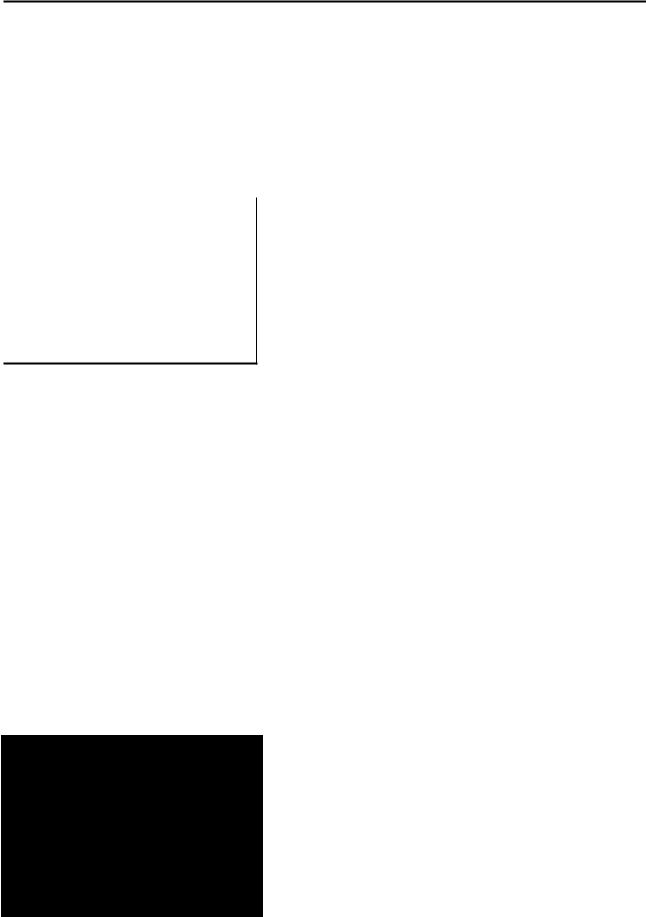
SCHEDULED MAINTENANCE SERVICES
A
9TFOAX-Q11
9TGOAX-Q16
Recommended SAE Viscosity
REPLACEMENT OF ENGINE OIL
Warning
•Be careful when draining; the oil is hot.
1.Warm up the engine to normal operating temperature and stop it.
2.Remove the oil filler cap and the oil pan drain plug.
3.Drain the oil into a suitable container.
4.Install a new gasket and the drain plug.
Tightening torque:
29-41 N·m (3.0-4.2 m-kg, 22-30 ft-Ib)
5.Refill the engine with the specified type and amol,.lnt of engine oil.
Oil pan capa~ity
HA, SL: 6.5 liters (6.9 US qt, 5.7 Imp qt) TF: 7.0 liters (7.4 US qt, 6.2 Imp qt)
Note
•The distance between the L and F marks on the level gauge represents 2.0 liters (2.11 US qt, 1.76 Imp qt).
6.Refit the oil filler cap.
7.Run the engine and check for leaks.
a. Stop the engine and check the oil level. Add oil if necessary.
9TGOAX·017
Temperature |
(0C) |
|
-30 |
|
-20 |
-10 |
|
0 |
|
|
10 |
20 |
30 |
|
|
40 |
50 |
||||
|
|
|
|
|
|
|
|
|
|
|
|
|
|
|
|
|
|
|
|
||
|
|
|
|
|
|
|
|
|
|
|
|
|
|
|
|
|
|
|
|
||
(oF) |
-20 |
|
0 |
20 |
|
|
|
40 |
60 |
|
80 |
|
|
100 |
120 |
||||||
|
|
|
|
|
|
|
|||||||||||||||
|
|
|
|
|
|
|
|
||||||||||||||
|
|
|
|
|
|
|
|
|
|
||||||||||||
|
|
|
|
|
|
|
|
|
|
|
|
|
|
|
|
|
|
|
|
|
|
|
|
|
|
|
|
|
|
|
|
|
|
|
|
|
|
|
|
|
|
|
|
|
|
|
|
|
|
|
|
|
< |
|
|
30 |
|
|
|
|
|
|
40 |
||
|
|
|
|
|
|
|
|
|
|
|
|
|
|
|
|
|
|||||
|
|
|
|
|
"> |
< |
|
|
|
2OW-2O |
|
|
> |
|
|
|
|
|
|||
Engine oil |
|
|
SW-30 |
|
|
|
|
|
|
|
|
|
|
||||||||
|
|
|
|
|
|
|
|
|
|
|
|
|
|
|
|
||||||
|
|
|
|
|
|
|
|
|
|
|
|
|
|
|
|
|
|
|
|
||
|
|
|
< |
|
|
|
|
|
|
|
|
|
|
|
|
|
|
||||
|
|
|
|
|
10W-30 |
|
|
|
> |
|
|
|
|
|
|||||||
|
|
|
|
|
|
|
|
|
|
|
|
|
|
|
|
|
|
||||
|
|
|
|
|
|
|
|
|
|
|
|
|
|
|
|
|
|
|
|
|
|
|
|
|
|
|
|
|
|
|
|
|
|
|
|
|
|
|
|
|
|
|
|
OSUODX-Q04
Anticipated ambient temperature range before succeeding oil change. °C (oF).
REPLACEMENT OF OIL ALTER
1.Remove the oil filter with a suitable wrench.
2.Use a clean rag to wipe off the mounting surface on the engine.
3.Apply a small amount of clean engine oil to the rubber seal of the new filter.
4.Install the oil filter and tighten it by hand until the rubber seal contacts the base.
5.Tighten the filter 1/2 turn with a filter wrench.
6.Start the engine and check for leaks.
7.Check the oil level and add oil if necessary.
Oil filter capacity: 1.0 liter (1.06 US qt, 0.88 Imp qt)
A-11

A
SCHEDULED MAINTENANCE SERVICES
REPLACEMENT OF OIL BYPASS FILTER
1. Remove the oil bypass filter with a suitable wrench.
2.Use a clean rag to wipe off the mounting surface on the engine.
3.Apply a small amount of clean engine oil to the rubber seal of the new filter.
4.Install the oil bypass filter and tighten it by hand.
5.Start the engine and check for leaks.
6.Check the oil level and add oil if necessary.
Oil bypass filter capacity:
0.6liter (0.63 US qt, 0.53 Imp qt)
INSPECTION OF COOUNG SYSTEM
Warning
•Never remove the radiator cap while the engine is hot.
•Wrap a thick cloth around the cap before removing it.
•When removing the radiator cap, loosen it slowly to the first stop until the pressure in the radiator is released, and then remove it.
9TFOAX-014
Coolant level (Engine cola)
1.Verify that the coolant level is near the coolant inlet port.
2.Verify that the coolant level in the coolant reservoir is between the FULL and LOW marks. Add coolant if necessary.
Coolant quality
1.Verify that there is no buildup of rust or scale around the radiator cap or coolant inlet port.
2.Verify that coolant is free of oil. Replace the coolant if necessary.
Coolant leakage
1.Connect a radiator tester (commercially available) and the SST to the coolant inlet ~ort.
2.Apply 88 kPa (0.9 kg/cm , 13 psi) pressure to the system.
3.Verify that the pressure is held. If not, check for coolant leakage.
A-12
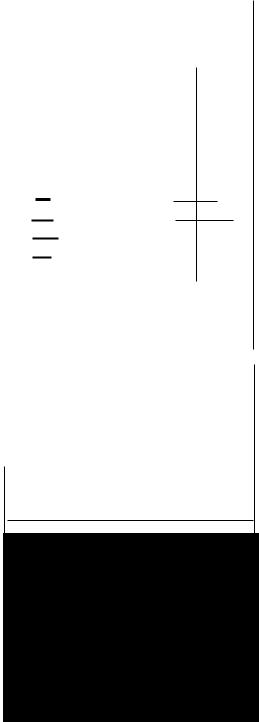
|
|
|
|
|
|
|
|
|
|
|
|
|
|
|
|
|
|
|
|
|
|
SCHEDULED MAINTENANCE SERVICES |
|
|
|
A |
|||||||||||||||
|
|
|
|
|
|
|
|
|
|
|
|
|
|
|
|
|
|
|
|
|
|
|
|
|
|
|
|
|
|
|
|
|
|
|
Coolant Protection |
|
|
|
|
|
|
|
|
|
|
|
|
|
|
|
|
|
|
|
|
|
|
|
|
|
|
|
|
|
|
|
|
|
|
|
|
|
|
|
|
|
|
|
|
|
|
|
|
SPECIFIC |
|
|
COOLANT PROTECTION |
|
|
|
|
|
|
|
|
|
Caution |
|
|
|
|
|
|
||||||||||||||||||||||
|
|
|
|
|
|
|
|
|
|
|
|
|
|
|
|
|
|
|
|
|
|
|
|
|
|
|
|
|
• Do not use alcoholor methanol-based coolant. |
||||||||||||
GRAVITY |
|
|
|
|
|
|
|
|
|
|
|
|
|
|
|
|
|
|
|
|
|
|
|
|
|
|
|
|
|
||||||||||||
1.1 00 |
|
|
|
|
|
|
|
|
|
|
|
|
|
|
|
|
|
|
|
|
|
|
|
|
|
|
|
|
|
|
|
• Use only soft (demineralized) water in the coolant |
|||||||||
|
|
|
|
|
|
|
|
|
|
|
|
|
|
|
|
|
|
|
|
|
|
|
|
|
|
|
|
|
|
|
|||||||||||
10 |
|
|
|
|
|
|
|
|
|
|
|
|
|
|
|
|
|
|
|
|
|
|
|
|
|
|
|
|
|
|
|
mixture. |
. |
|
|
|
|
|
|||
|
|
|
|
|
|
|
|
|
|
|
|
|
|
|
|
|
|
|
|
|
|
|
|
|
|
|
|
|
|
|
|
|
|
|
|
|
|
||||
|
90 |
|
"" |
|
|
|
|
|
|
|
|
|
|
|
|
|
|
|
|
|
|
|
|
|
|
|
|
|
|
|
|
|
|
|
|
|
|
|
|||
|
|
|
|
|
|
|
|
|
|
|
|
|
|
|
|
|
|
|
|
|
|
|
|
|
|
|
|
|
|
|
|
|
|
|
|
||||||
|
|
|
|
|
|
|
|
|
|
|
|
|
|
|
|
|
|
|
|
|
|
|
|
|
|
|
|
|
|
|
|
|
|
|
|||||||
1.08 |
|
~~ |
|
|
|
|
|
|
|
|
|
|
|
|
|
|
|
|
|
|
|
|
|
|
|
|
|
1. Measure the coolant temperature and specific gravity with |
|||||||||||||
1.07 |
|
|
|
|
|
|
|
|
|
|
|
|
|
|
|
|
|
|
|
|
|
|
|
|
|
|
|||||||||||||||
|
|
|
|
|
|
|
|
|
|
|
|
|
|
|
|
|
|
|
|
|
|
|
|
|
|||||||||||||||||
|
|
|
|
|
|
|
|
|
|
|
|
|
|
|
|
|
|
|
|
|
|
|
|
|
|
|
|
|
|
|
|
|
|
|
a thermometer and a hydrometer. |
|
|
|
|
|
|
|
|
|
|
|
|
I" |
|
~% |
|
|
|
|
|
|
|
|
|
|
|
|
|
|
|
|
|
|
|
|
|
|
|
||||||||||
|
1.0S |
|
|
|
|
|
|
|
|
|
|
|
|
|
|
|
|
|
|
|
|
|
|
|
|
|
|
|
|
|
|
|
2. Determine the coolant protection by referring to the graph |
||||||||
|
|
.......... |
|
|
|
|
|
|
40% |
|
"'-.. |
|
|
|
|
|
|
|
|
|
|
|
|
|
|
|
|
||||||||||||||
|
|
|
|
|
|
|
|
|
|
|
|
|
|
|
|
|
|
|
|
|
|
|
|
shown. |
|
|
|
|
|
|
|||||||||||
1.0 |
~, |
|
|
|
...... |
|
30% |
|
|
|
|
|
|
|
|
|
|
|
|
|
|
|
|
|
|
|
|
|
|
|
|
|
|
|
|
|
|||||
1.040 |
|
|
|
|
|
~ |
|
|
|
|
|
|
|
|
|
|
|
|
|
|
|
|
|
I |
|
|
|
|
|
|
If the coolant protection is not proper, add water or coolant. |
||||||||||
|
|
|
|
|
|
|
|
|
|
|
|
|
|
|
|
|
|
|
|
|
|
|
|
|
|
||||||||||||||||
|
|
|
|
|
|
|
|
|
|
|
|
r---.... |
|
|
|
|
|
|
|
|
|
|
|
|
|
|
|
|
|
|
|
|
|
|
|||||||
|
|
|
|
|
|
|
|
|
|
|
|
|
|
|
|
|
|
|
|
|
|
|
|
|
|
|
|
|
|
|
|
|
|
|
|
|
|
||||
|
i.O |
~, |
|
|
|
|
|
|
|
|
|
|
|
'" |
"-..; |
|
'"...... - |
|
|
|
|
|
Antifreeze solution mixture percentage |
|
|
||||||||||||||||
|
|
|
|
|
|
|
|
|
|
|
|
|
|
|
|
|
|
|
|
|
|
|
|
|
|
|
|
|
|
|
|||||||||||
|
|
|
|
|
|
|
|
|
|
|
|
|
|
|
|
|
|
|
|
r---.... |
|
|
|
'" |
|
|
|
|
|||||||||||||
1.02 |
|
|
|
|
|
|
|
|
|
|
|
|
|
|
|
|
|
|
...... |
-........; |
|
|
|
|
|
|
|
|
|
||||||||||||
|
|
|
|
|
|
|
|
|
|
|
|
|
|
|
|
|
|
|
|
|
|
|
|
|
|
|
|||||||||||||||
|
|
|
|
|
|
|
I |
|
|
|
|
|
|
|
|
|
|
|
|
|
|
.......... |
--. |
|
|
|
|
|
|
|
|
|
|||||||||
1.01 |
|
|
|
|
|
|
|
|
|
|
|
|
|
|
I |
|
|
|
|
|
|
|
|
Coolant protection |
tvolume percentage (%) |
|
|
Gravity at |
|
||||||||||||
|
|
|
|
|
|
|
|
|
|
|
|
|
|
|
|
|
|
|
|
|
|
|
|
|
|
|
|
|
|||||||||||||
|
|
|
|
|
|
|
I |
|
|
|
|
|
|
|
|
|
|
|
|
|
|
|
|
|
|
|
|
|
|
|
Water |
Coolant |
|
|
20°C (68°F) |
|
|||||
|
|
|
|
|
|
|
|
|
|
|
|
|
|
|
|
|
|
|
|
|
|
|
|
|
|
|
|
|
|
|
|
|
|||||||||
|
|
|
|
|
|
|
|
|
|
|
|
|
|
|
|
|
|
|
|
|
|
|
|
|
|
|
|
|
|
|
|
|
|
|
|
|
|||||
1.00 |
|
|
|
|
|
|
|
|
|
|
|
|
|
|
|
|
|
|
|
|
|
|
|
|
|
|
|
|
|
|
Above -16°C (3°F) |
65 |
35 |
|
|
1.054 |
|
||||
|
|
|
|
|
|
|
|
|
|
|
|
|
|
|
|
|
|
|
|
|
|
|
|
|
|
|
|
|
|
|
|
|
|
||||||||
|
|
|
|
|
|
|
|
|
|
|
|
|
|
|
|
|
|
|
|
|
|
|
|
|
|
|
|
|
|
|
|
|
|
|
|
|
|
||||
|
|
|
|
|
|
|
|
|
|
|
|
|
|
|
|
|
|
|
|
|
|
|
|
|
|
10 |
80 |
|
|
|
Above -26°C (-15°F) |
55 |
45 |
|
|
1.066 |
|
||||
-10 |
0 |
10 |
20 |
30 |
40 |
50 |
60 |
90 |
|
|
|
|
|
|
|
|
|||||||||||||||||||||||||
|
Above -40°C (-40°F) |
45 |
55 |
|
|
1.078 |
|
||||||||||||||||||||||||||||||||||
(14) |
(32) (50) |
(S8) (86)(104)(122X 14OK158)(17SX194) |
I |
|
|
|
|||||||||||||||||||||||||||||||||||
|
|
|
|
|
|
|
COOLANT TEMPERA'fUI'IE'C(OF) |
|
|
|
|
|
|
|
|
|
05UOEX.o10 |
||||||||||||||||||||||||
|
|
|
|
|
|
|
|
|
|
|
|
|
|
|
|
|
|
||||||||||||||||||||||||
|
|
|
|
|
|
|
|
|
|
|
|
|
|
|
|
|
|
|
|
|
|
|
|
|
|
|
|
|
|
|
|
|
|
|
|
|
|
|
|
|
|
DRAIN PLUG
REPLACEMENT OF ENGINE COOLANT
Warning
•Never open the radiator cap while the engine is hot.
•Wrap a thick cloth around the cap before loosening it.
•Use caution when draining hot coolant.
Caution
•Do not use alcoholor methanol-based coolant.
•Use only soft (demineralized) water in the coolant mixture.
1.Remove the radiator cap and loosen the drain plug.
. 2. Drain the coolant into a suitable container.
3.Flush the cooling system with water until all traces of color are gone, then let the system drain completely.
4.Install the drain plug.
5.Fill with the proper amount and mixture of ethylene glycolbased coolant by referring to the table above.
Coolant capacity
With heater core: 13.5 liters (14.3 US qt, 11.91mp qt) 'Withoutheater core:
12.5 liters (13.2 US qt, 11.0 Imp qt)
6.Run the engine, with the radiator cap removed, until the up- per radiator hose is hot.
7.With the engine idling, add coolant to the radiator until it reaches the bottom of the coolant inlet port.
8.Install the radiator cap.
A-13
